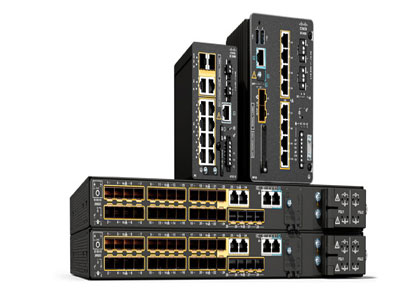Key Takeaway
The key difference between Industrial Ethernet and Ethernet/IP lies in their purpose and functionality. Industrial Ethernet is a broader term that refers to using Ethernet technology in industrial environments for real-time data communication. It includes various protocols like PROFINET, EtherCAT, and Ethernet/IP, tailored for industrial automation needs.
Ethernet/IP (Industrial Protocol) is a specific industrial Ethernet protocol. It is built on standard Ethernet and uses the Common Industrial Protocol (CIP) for data exchange between devices like PLCs, sensors, and actuators. While Industrial Ethernet covers multiple technologies, Ethernet/IP focuses on real-time control and is widely used in automation systems. The choice depends on your application’s requirements, as Industrial Ethernet offers flexibility with various protocols, and Ethernet/IP specializes in seamless device communication.
Defining Industrial Ethernet and Ethernet IP
Industrial Ethernet refers to the adaptation of standard Ethernet technology for industrial settings. Unlike the Ethernet you might find in offices or homes, Industrial Ethernet is ruggedized to handle harsh environments, such as factories, with high vibration, temperature extremes, and electromagnetic interference. It ensures robust communication between machines and controllers.
On the other hand, Ethernet/IP stands for Ethernet Industrial Protocol, a specific industrial communication protocol that operates on standard Ethernet. Managed by the Open DeviceNet Vendors Association (ODVA), Ethernet/IP uses the Common Industrial Protocol (CIP) to facilitate real-time data exchange between industrial devices like PLCs, robots, and sensors.
In simple terms:
Industrial Ethernet is the umbrella term for Ethernet-based communication in industrial setups.
Ethernet/IP is one protocol under this umbrella designed for real-time industrial automation.
These distinctions may seem minor, but they are critical when designing automation systems tailored to specific industry needs.

Key Features of Ethernet/IP for Industrial Networks
Ethernet/IP shines as a protocol specifically built for industrial automation. It is lauded for its compatibility and scalability, making it a favorite among engineers for implementing seamless industrial communication.
Here’s why:
Real-Time Communication: Ethernet/IP enables deterministic communication, meaning data is delivered and processed in precise timeframes. This is essential for tasks like motor control and robotics.
Device Interoperability: Thanks to its CIP foundation, Ethernet/IP supports interoperability between devices from various manufacturers, creating a standardized communication ecosystem.
High Bandwidth: Ethernet/IP leverages standard Ethernet’s bandwidth, allowing large amounts of data to be transmitted quickly.
Seamless Integration: It integrates effortlessly with other Ethernet-based systems, reducing the need for expensive hardware modifications.
For example, if you’re working in an assembly line that requires synchronization between multiple machines, Ethernet/IP ensures smooth coordination without communication delays. Its built-in diagnostics also make it easier to detect and troubleshoot issues before they escalate, keeping operations efficient and cost-effective.
You May Like to Read
Performance Comparison Between Industrial Ethernet and Ethernet IP
Performance Comparison Between Industrial Ethernet and Ethernet IP
Real-Time Communication in Ethernet/IP vs. Standard Industrial Ethernet
Real-time communication is crucial in industrial automation. It ensures processes like motion control, material handling, and quality inspection occur without delays, minimizing downtime and enhancing productivity.
Ethernet/IP excels in real-time data exchange thanks to its use of CIP. It categorizes data as explicit (non-time-critical) and implicit (real-time), ensuring that time-sensitive commands reach their destination instantly.
Standard Industrial Ethernet, while robust, might not guarantee real-time performance unless paired with specific protocols like EtherCAT or Profinet. These protocols are often tailored for high-speed operations but lack the plug-and-play simplicity of Ethernet/IP.
Here’s a practical scenario:
Ethernet/IP: A robotic arm requires precise movement within milliseconds to assemble a product. Ethernet/IP ensures commands are delivered accurately and on time.
Standard Industrial Ethernet: For a monitoring system tracking environmental data, speed isn’t as critical.
The choice here depends on whether your system prioritizes deterministic communication or general-purpose data transmission. Ethernet/IP offers the edge in time-sensitive applications.
When to Use Industrial Ethernet vs. Ethernet IP in Automation Systems
Selecting between Industrial Ethernet and Ethernet/IP boils down to your system’s specific needs.
Use Industrial Ethernet if:
Your setup requires a diverse range of protocols for flexibility.
The environment demands rugged and durable communication networks.
Cost-effectiveness is a priority, and high-speed synchronization isn’t critical.
Use Ethernet/IP if:
Real-time communication is non-negotiable.
Your system involves devices from multiple manufacturers needing seamless communication.
You’re working with applications requiring high bandwidth and deterministic data exchange.
For example, a packaging plant needing rapid coordination between conveyor belts and robotic arms would benefit from Ethernet/IP’s precision. Meanwhile, a wastewater treatment facility might lean towards Industrial Ethernet for its resilience in harsh environmental conditions.
Both technologies have their strengths. The key is understanding your system’s priorities—whether it’s speed, reliability, or interoperability—and choosing the protocol that aligns best with those needs.
Conclusion
The difference between Industrial Ethernet and Ethernet/IP is not just technical jargon—it’s about choosing the right tool for the job. Industrial Ethernet provides a robust foundation for versatile communication, while Ethernet/IP shines in precise, real-time automation tasks.
For new engineers stepping into the world of industrial automation, understanding these distinctions is critical. The right choice can enhance efficiency, reduce downtime, and ensure your system delivers optimal performance.
By aligning the protocol with your network’s needs, you’re not just investing in technology—you’re future-proofing your automation processes for years to come.
